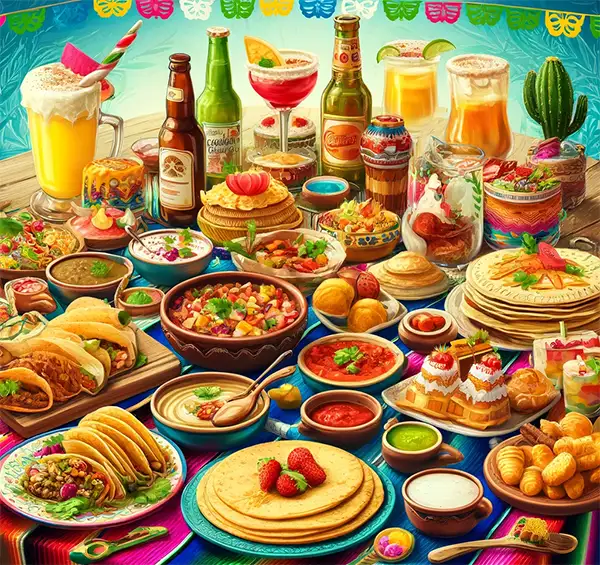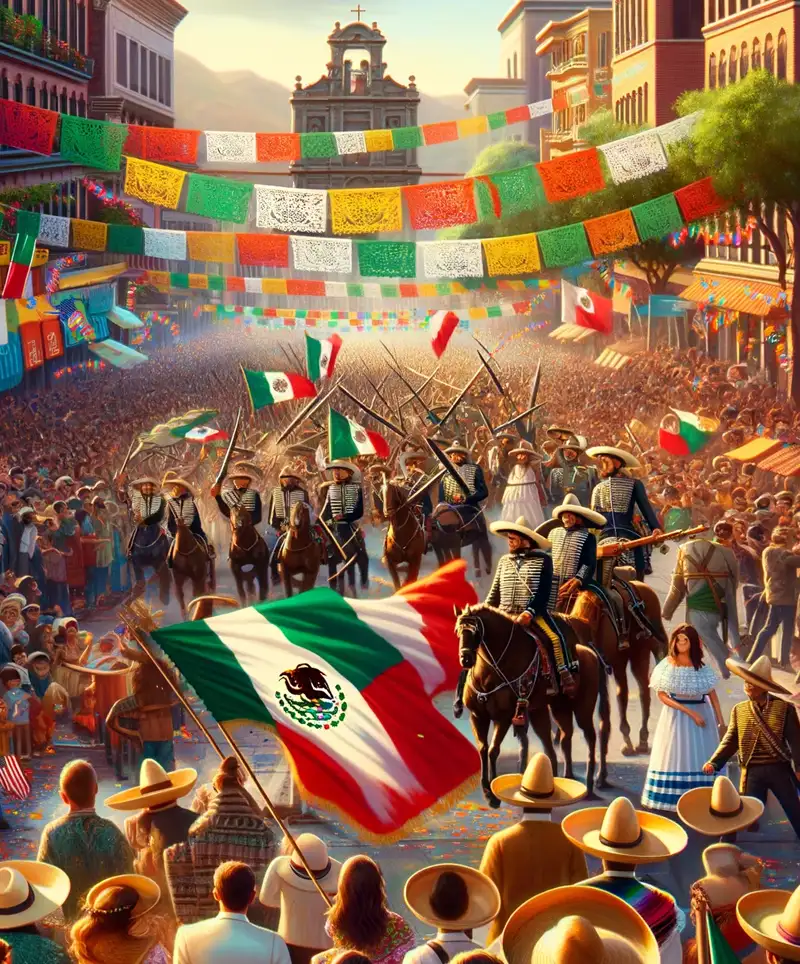A Spicy Slice of History Wrapped in a Tortilla of Fun
Every year on May 5th, revelers from various corners of the globe pull out their sombreros and maracas to celebrate Cinco de Mayo. This festive occasion is known for its vibrant parades, mouth-watering food, and copious amounts of tequila. However, contrary to popular belief, it's not Mexican Independence Day. That's right, hold onto your guacamole, folks—we will explore the real story and spirited celebrations of Cinco de Mayo.
The Historical Hot Sauce
Cinco de Mayo commemorates the Battle of Puebla on May 5, 1862, when a scrappy Mexican army, underdog in every sense, triumphed over the mighty French forces. Why were the French in Mexico, you ask? They were there not for the enchiladas but because Mexico had defaulted on debt payments to European governments. Napoleon III decided it was a fantastic time to establish a French empire in Mexico. Little did he know, he was about to get a spicy kick of resistance.
General Ignacio Zaragoza led his poorly equipped Mexican force to an unlikely victory in what could be considered a version of a "David vs. Goliath" match. Despite being outnumbered and under-armed, Zaragoza’s 2,000 men stood strong against the elite 6,000-strong French cavalry and forced them to retreat, marking a significant morale boost for Mexican forces.
The Misunderstood Mexican Mayhem
Now, let’s clear up some confusion. Cinco de Mayo isn’t as widely celebrated in Mexico as many might think. It’s actually more of an American holiday, evolving into a broader celebration of Mexican culture and heritage. It’s the day when everyone suddenly has a drop of Mexican blood and an insatiable craving for tacos.
Party Like It’s 1862
Cinco de Mayo has become a whirlwind of fiestas and festivities in the United States. Cities like Los Angeles, Chicago, and Houston host grand parades, lively folk dancing, and mariachi music performances. It’s a full-blown cultural bash that sees Americans embracing Mexican traditions openly and perhaps slightly misunderstanding the holiday's origins.
Fiesta Faux Pas: A word of caution: while dressing up and enjoying the day is encouraged, cultural sensitivity is a must. That means no stereotypical costumes or over-the-top accents. Remember, it’s a day of respect for another culture, so let's keep it classy and fun!
The Culinary Delights
Cinco de Mayo offers a delectable excuse to dive deep into Mexican cuisine, a palette of vibrant flavors and mouth-watering dishes that go beyond the ubiquitous tacos and margaritas. This section of our festive journey explores the culinary highlights that make this holiday a favorite among food enthusiasts.
 Let's start with the beloved taco. While tacos are a staple on Cinco de Mayo, the variety available is staggering. From classic carne asada and tender al pastor with its hints of pineapple to the innovative fusion tacos that incorporate global flavors, tacos are a canvas for culinary creativity. The key to a great taco lies in its simplicity: fresh ingredients, perfectly seasoned fillings, and handmade tortillas.
Let's start with the beloved taco. While tacos are a staple on Cinco de Mayo, the variety available is staggering. From classic carne asada and tender al pastor with its hints of pineapple to the innovative fusion tacos that incorporate global flavors, tacos are a canvas for culinary creativity. The key to a great taco lies in its simplicity: fresh ingredients, perfectly seasoned fillings, and handmade tortillas.
Tamales, another cornerstone of Mexican cuisine, are particularly special due to their festive and communal nature of preparation, known as 'tamaladas' where families come together to prepare them. These packets of goodness are made with masa (corn dough) and filled with anything from chilies and cheese to pork and red sauce, all wrapped in a corn husk and steamed to perfection. The result is a warm, comforting treat that's as fun to make as it is to eat.
No Cinco de Mayo celebration is complete without a variety of salsas. These aren't just any condiments; they are explosive creations that range from the mild pico de gallo to the fiery salsa verde made with tomatillos and jalapeños. Salsas are the heart of Mexican cooking, adding flavor, heat, and zest to every dish they grace.
After the savory, the sweet must follow. Churros, often enjoyed dipped in chocolate or sprinkled with cinnamon sugar, are a popular treat on Cinco de Mayo. But let's not forget about other desserts like flan—a creamy caramel-topped custard—and tres leches cake, a moist masterpiece soaked in three types of milk.
While margaritas might steal the spotlight, there's a whole range of traditional Mexican beverages to enjoy. Horchata, a sweet rice milk flavored with cinnamon, offers a refreshing counterbalance to the spices of Mexican cuisine. For those looking for something stronger, there’s pulque, an ancient drink made from fermented agave sap, or a well-crafted Michelada, a spicy beer cocktail that's perfect for toasting under the May sun.
Cinco de Mayo provides an excellent platform not just for eating but also for learning about Mexico's rich culinary history. Many communities and restaurants take this opportunity to host cooking classes or demonstrations, revealing the techniques and stories behind the dishes. This educational aspect encourages a deeper appreciation and understanding of Mexican culinary traditions, fostering a more authentic holiday celebration.
The food of Cinco de Mayo is a vivid expression of Mexican culture, offering a feast for the senses that goes far beyond simple sustenance. Each dish tells a story, and each sip carries a tradition, making Cinco de Mayo a delicious experience to savor and cherish. The More You Know
Educationally, Cinco de Mayo can be a fantastic opportunity to study Mexican history and learn about the influences of various cultures on Mexican society. Schools and communities often hold cultural workshops and exhibitions, showcasing the rich tapestry of Mexican history, art, and traditions.
So there you have it—a day steeped in history, misunderstood by many, but a fantastic reason to celebrate, educate, and eat. Whether you’re dancing to mariachi music, enjoying a taco, or just appreciating the vibrant Mexican culture, Cinco de Mayo is a testament to the spirit of freedom and the joy of a well-fought victory. Just remember, when someone passes you the tequila this Cinco de Mayo, it’s not just a shot; it’s a shot of history—cheers to that!
Please Share our Content






 Let's start with the beloved taco. While tacos are a staple on Cinco de Mayo, the variety available is staggering. From classic carne asada and tender al pastor with its hints of pineapple to the innovative fusion tacos that incorporate global flavors, tacos are a canvas for culinary creativity. The key to a great taco lies in its simplicity: fresh ingredients, perfectly seasoned fillings, and handmade tortillas.
Let's start with the beloved taco. While tacos are a staple on Cinco de Mayo, the variety available is staggering. From classic carne asada and tender al pastor with its hints of pineapple to the innovative fusion tacos that incorporate global flavors, tacos are a canvas for culinary creativity. The key to a great taco lies in its simplicity: fresh ingredients, perfectly seasoned fillings, and handmade tortillas.








 "Sláinte!" is a traditional Irish expression used as a toast, equivalent to "Cheers!" in English.
"Sláinte!" is a traditional Irish expression used as a toast, equivalent to "Cheers!" in English.